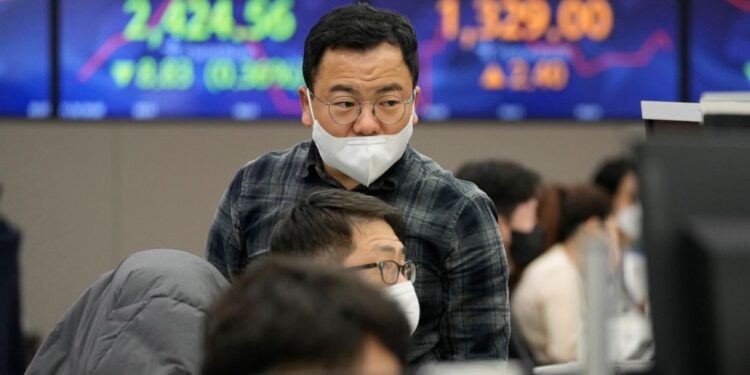U.S. markets were flat to modestly higher ahead of a closely watched speech by the Federal Reserve chief that may give clues about future interest rate hikes
U.S. markets are flat ahead of a highly anticipated speech by the chair of the Federal Reserve that may give clues about future interest rate hikes.
On the last trading day of the month, futures for the Dow Jones industrials and the S&P 500 appeared static. Major U.S. indices are clinging to small gains in November, which if they hold, would be the second straight month of advances after a miserable September.
There is hope on Wall Street that the Fed will slow the scale and pace of its interest rate hikes and investors are closely watching the latest data on inflation, consumer spending and the employment market. They’ll be looking for any signs of a shift in policy when Powell speaks at the Brookings Institution about the outlook for the U.S. economy and the labour market on Wednesday.
The Fed’s benchmark rate currently stands at 3.75% to 4%, up from close to zero in March.
The U.S. government will be releasing several reports about the labour market this week. A report about job openings and labour turnover for October will be released Wednesday, followed by a weekly unemployment claims report Thursday. The closely watched monthly report on the job market will be released on Friday.
Investors were also keeping tabs on China, where protests have erupted over the “zero-COVID” strategy that has confined millions of people to their homes, sometimes for months.
China has eased some controls after demonstrations in at least eight mainland cities and Hong Kong. It’s unclear if protests will start up again after authorities detained an unknown number of people and stepped up surveillance.
Renewed restrictions on businesses and other activity have hit manufacturing, with an official survey announced Wednesday showing the purchasing manager’s index falling to 48.0 in November from 49.2 the month before. The index is on a scale of 0 to 100 where readings 50 and above show expansion.
“A further fall in the new orders and new export orders indices suggests this was largely driven by weakening domestic and foreign demand,” Capital Economics said in a report. “Today’s surveys suggest that intensified virus disruption has delivered another blow to the economy this month.”
Japan’s benchmark Nikkei 225 lost 0.2% to finish at 27,968.99 after reports said industrial production contracted 2.6% in October, compared with 1.7% in September, amid weakening demand from China and other world markets.
Other regional markets advanced.
Hong Kong’s Hang Seng added 2.1% to 18,584.49. The Shanghai Composite index inched up less than 0.1% to 3,151.34. Australia’s S&P/ASX 200 rose 0.4% to 7,284.20, while South Korea’s Kospi rose 1.6% to 2,472.53.
“Due to a more reflective approach to the recent zero-COVID measures, Chinese stocks have taken substantial leaps and bounds this week. However, that optimism is giving way to hawkish contemplation as traders twiddle their thumbs awaiting a speech from Federal Reserve Chair Jerome Powell later Wednesday,” Stephen Innes, a managing partner at SPI Asset Management, said in a report.
Shares in Europe climbed higher at midday after a report showed that inflation in the 19 countries that use the euro currency eased for the first time in more than a year as energy prices retreated from painful highs. But the 10% rate, a drop from 10.6% in October, still hovers near a record that has robbed consumers of their spending power and led economists to predict a recession.
Britain’s FTSE 100 and France’s CAC 40 each added 0.8%, while Germany’s DAX gained 0.4%.
Source: abcNEWS



Recent Comments